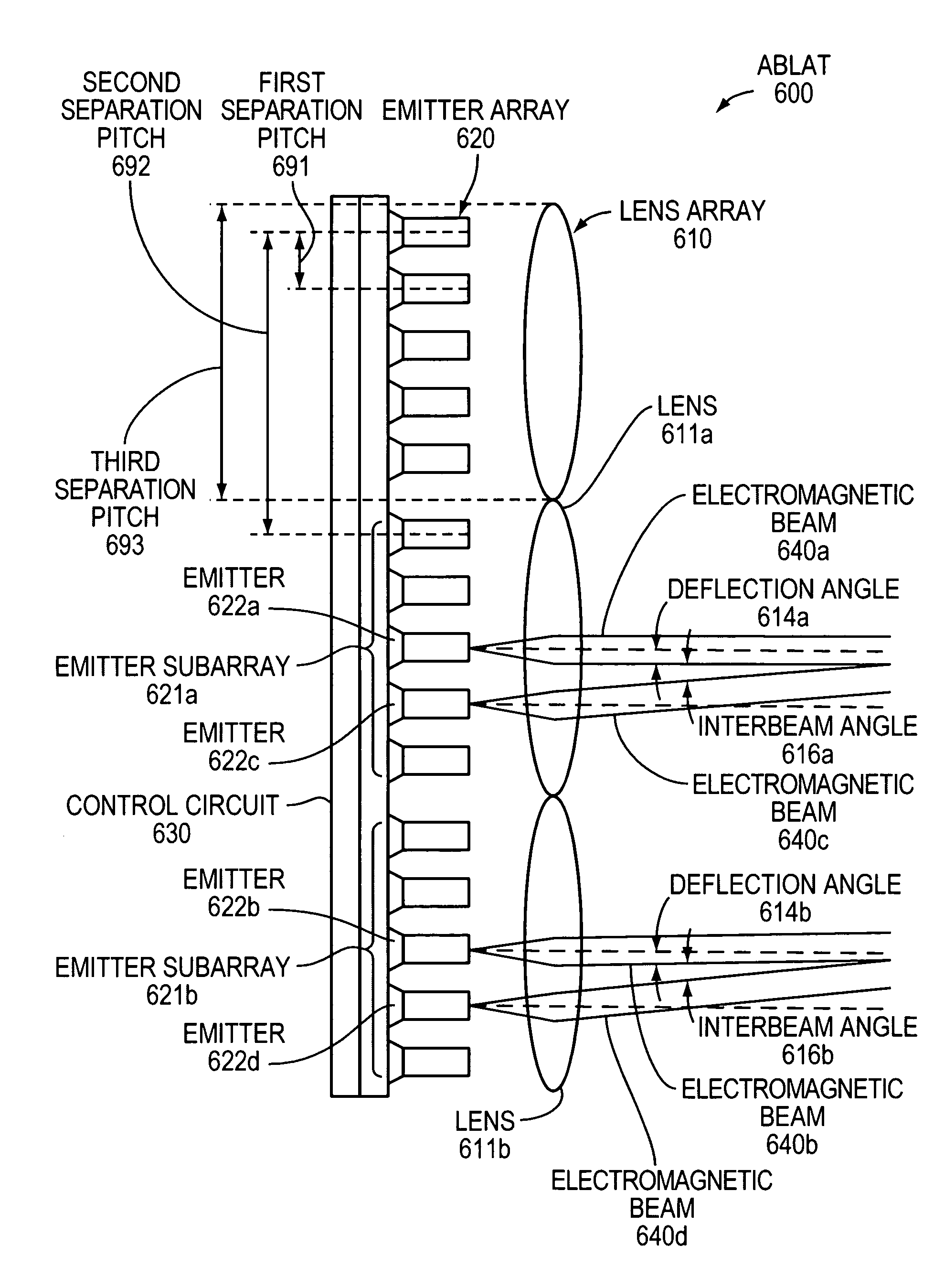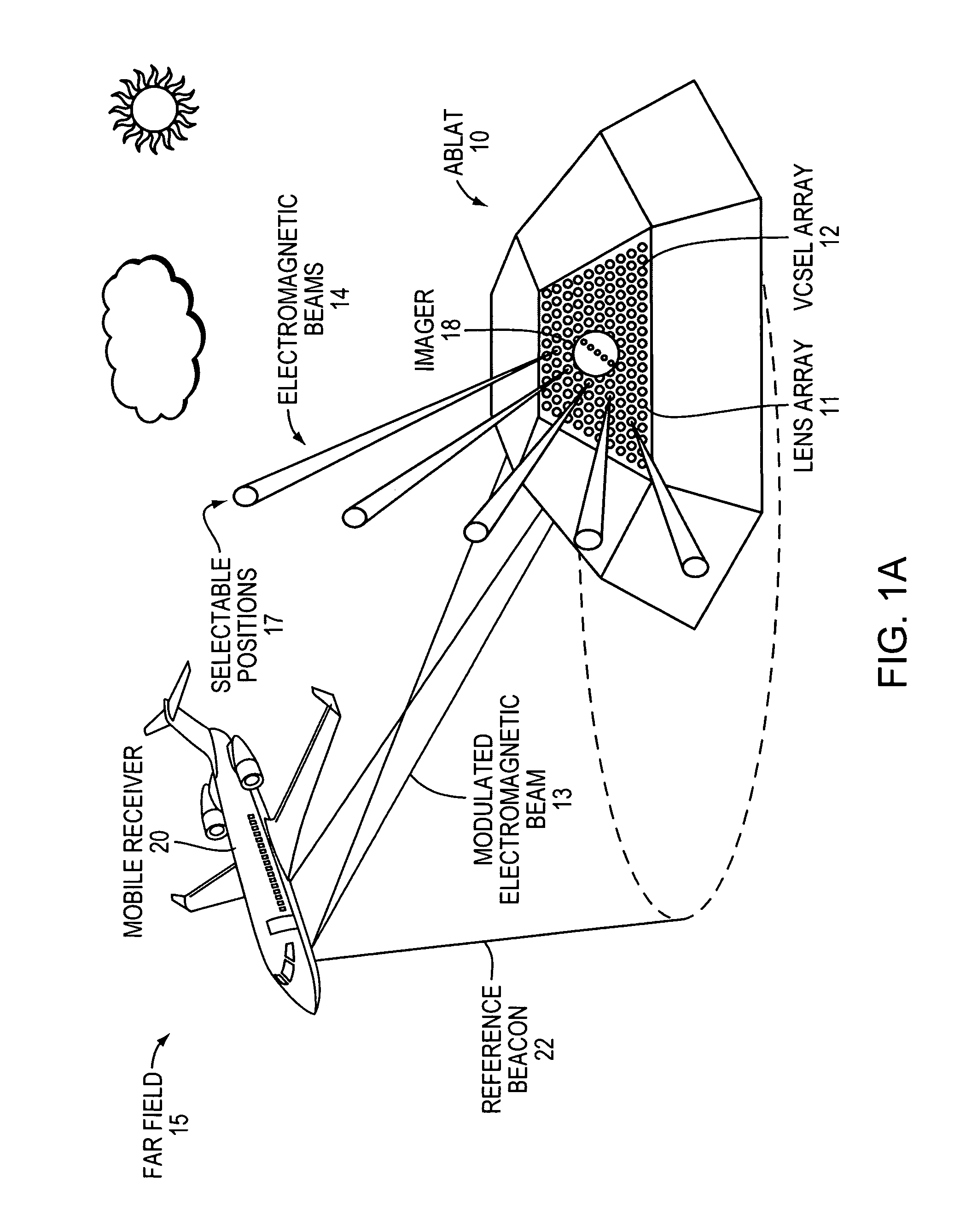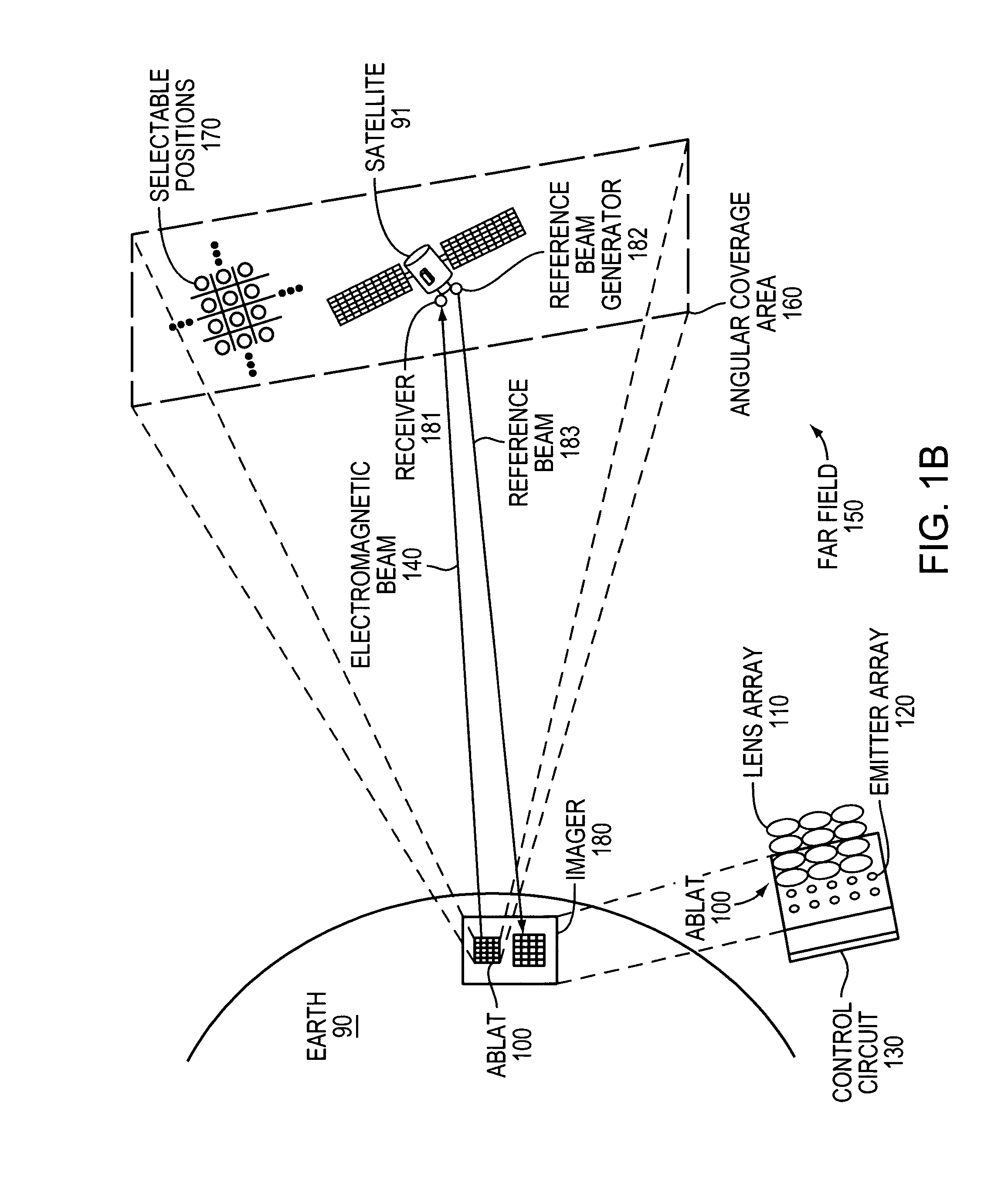Agile-beam laser array transmitter
a laser array transmitter and beam beam technology, applied in multiplex communication, semiconductor lasers, instruments, etc., can solve the problems of limiting pointing accuracy, affecting the accuracy of pointing, so as to achieve the effect of fast steering
- Summary
- Abstract
- Description
- Claims
- Application Information
AI Technical Summary
Benefits of technology
Problems solved by technology
Method used
Image
Examples
Embodiment Construction
[0034]A description of example embodiments of the invention follows.
[0035]FIG. 1A is a system-level diagram that illustrates free-space optical communications between an Agile-Beam Laser Array Transmitter (ABLAT) 10 and mobile receiver 20, such as an unmanned aerial vehicle, airplane, helicopter, car, truck, or other vehicle. The mobile receiver 20 shown in FIG. 1A uses a beacon generator (not shown) to project a reference beacon 22 towards an imager 18 mounted with the ABLAT 10. A control circuit determines the angle-of-arrival of the reference beacon 22 using the signal detected by the imager 18, then causes the ABLAT 10 to project a modulated electromagnetic beam 13 towards the mobile receiver 20, completing the communications link between the ABLAT 10 and the mobile receiver 20. The reference beacon can also be modulated to permit two-way communication between the mobile receiver 20 and the ABLAT 10.
[0036]The ABLAT 10 shown in FIG. 1A is mounted on a faceted surface and includes...
PUM
 Login to View More
Login to View More Abstract
Description
Claims
Application Information
 Login to View More
Login to View More - R&D
- Intellectual Property
- Life Sciences
- Materials
- Tech Scout
- Unparalleled Data Quality
- Higher Quality Content
- 60% Fewer Hallucinations
Browse by: Latest US Patents, China's latest patents, Technical Efficacy Thesaurus, Application Domain, Technology Topic, Popular Technical Reports.
© 2025 PatSnap. All rights reserved.Legal|Privacy policy|Modern Slavery Act Transparency Statement|Sitemap|About US| Contact US: help@patsnap.com



